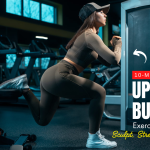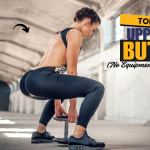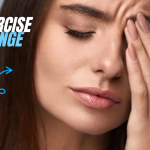Do you know that sitting for more than 6 hours a day can increase your risk of chronic disease—even if you exercise regularly? That’s right. It’s not just about how much you move, but how long you sit. And for desk workers who spend the bulk of their day hunched over screens, the consequences show up right where you feel it most: your core.
If you’re glued to your chair all day and feeling the slump in your midsection, this quick 8-minute abs workout is designed just for you. No fancy equipment. No need to change into workout gear. Just you, a chair or yoga mat, and a few minutes to reverse the damage of a sedentary day.
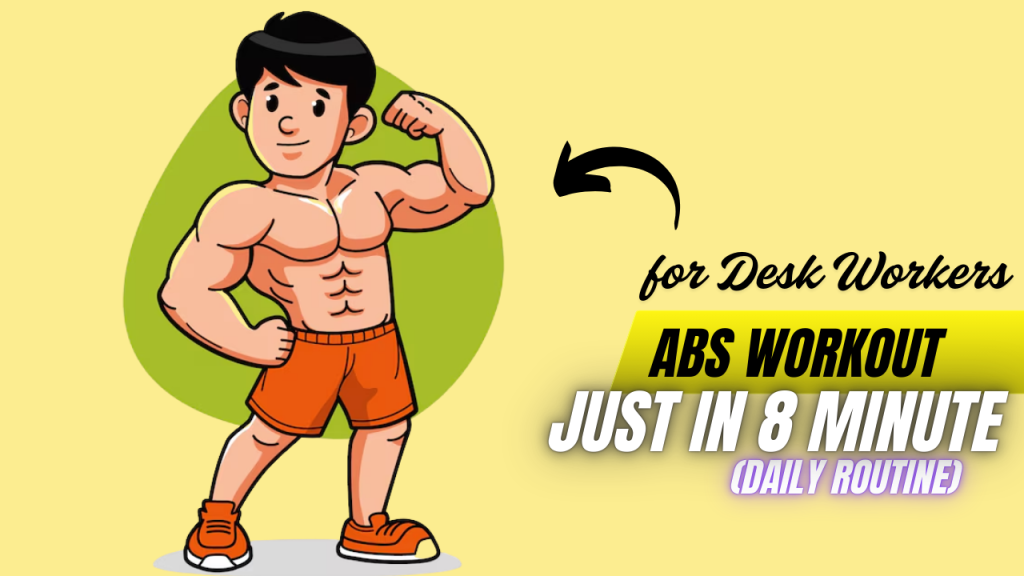
What Happens After 30 Days of This 8-Minute Abs Workout
| Benefit | What You’ll Notice |
|---|---|
| Improved Posture | You’ll sit and stand taller with reduced slouching and less shoulder rounding. |
| Stronger Core Muscles | Abdominals feel firmer and more activated during daily movements. |
| Reduced Lower Back Discomfort | Less stiffness or aching after long sitting periods. |
| Better Flexibility & Mobility | Increased range of motion in hips and spine from daily stretching and engagement. |
| More Energy at Work | Enhanced blood flow and core activation can fight afternoon fatigue and brain fog. |
| Faster Recovery from Sitting | Muscles adapt to respond quicker, reducing tightness and discomfort post-sitting. |
| Boosted Confidence | Feeling stronger and more upright can improve overall mood and self-image. |
| Workout Consistency Habit | Builds a healthy micro-habit that’s easy to maintain long-term. |
The Sitting Core Crisis
The human body wasn’t built for hours of inactivity. Yet, the average desk worker sits for over 8–10 hours daily. Over time, this leads to:
- Weak core muscles
- Poor posture and spinal compression
- Lower back pain
- Reduced calorie burn and slower metabolism
Myth Buster: Many believe crunches alone build a strong core. But the truth? Crunches target only surface-level muscles. To undo sitting damage, you need a well-rounded routine that hits the deeper stabilizing muscles too.
Why Core Strength Matters for Desk Workers
Your core is more than just your abs. It includes the obliques, transverse abdominis, lower back, and even your pelvic floor. A strong core improves:
- Posture: Helps you sit tall without slouching
- Balance: Reduces the risk of falls and injuries
- Breathing: Supports proper diaphragm movement
- Back Health: Lessens pressure on the lumbar spine
Fact: People with strong core muscles report up to 30% less back pain than those with weaker cores.
8-Minute Abs Workout to Reverse Desk Damage
This short, powerful routine requires no equipment and can be done at home or in the office. Aim to do these exercises daily or every other day for best results.
1. Seated Knee Raises

Time: 1 minute
Sit tall at the edge of your chair. Grip the sides, lean slightly back, and raise your knees toward your chest. Lower without touching the floor.
Targets: Lower abs and hip flexors
Tip: Engage your core throughout; avoid using momentum.
2. Standing Oblique Crunches
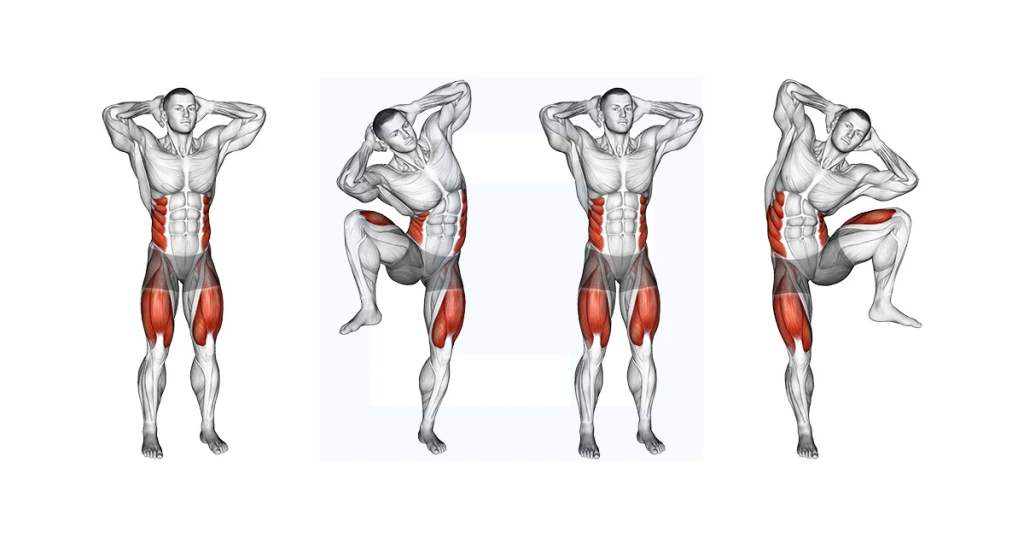
Time: 1 minute
Stand tall. Place your hands behind your head. Bring your right elbow to your right knee while lifting it sideways. Alternate sides.
Targets: Obliques, core stability
Bonus: Improves balance and gets blood flowing.
3. Plank with Shoulder Taps

Time: 1 minute
Start in a high plank position. Tap your left shoulder with your right hand, then switch.
Targets: Deep core, shoulders, and lower back
Pro Tip: Keep hips steady—imagine a glass of water on your back.
4. Dead Bug (Floor or Mat)

Time: 1 minute
Lie on your back. Raise arms and legs in a tabletop position. Extend right leg and left arm out, then return. Switch.
Targets: Transverse abdominis and coordination
Why it works: One of the safest core moves for your spine.
5. Glute Bridges

Time: 1 minute
Lie down, knees bent. Lift your hips off the floor by squeezing your glutes and core.
Targets: Lower back, glutes, and core
Did You Know? Sitting all day shuts down your glutes—this exercise wakes them up.
6. Seated Torso Twists (with or without weight)

Time: 1 minute
Sit upright, feet flat. Twist your torso side to side while keeping your hips stable.
Targets: Obliques and spine mobility
Optional: Hold a small book or water bottle for resistance.
7. Cat-Cow Stretch (Core Recovery)

Time: 1 minute
On hands and knees, alternate between arching and rounding your back.
Targets: Spine mobility and core engagement
Why it’s important: Counteracts spinal stiffness from sitting.
8. Standing Forward Fold with Core Squeeze
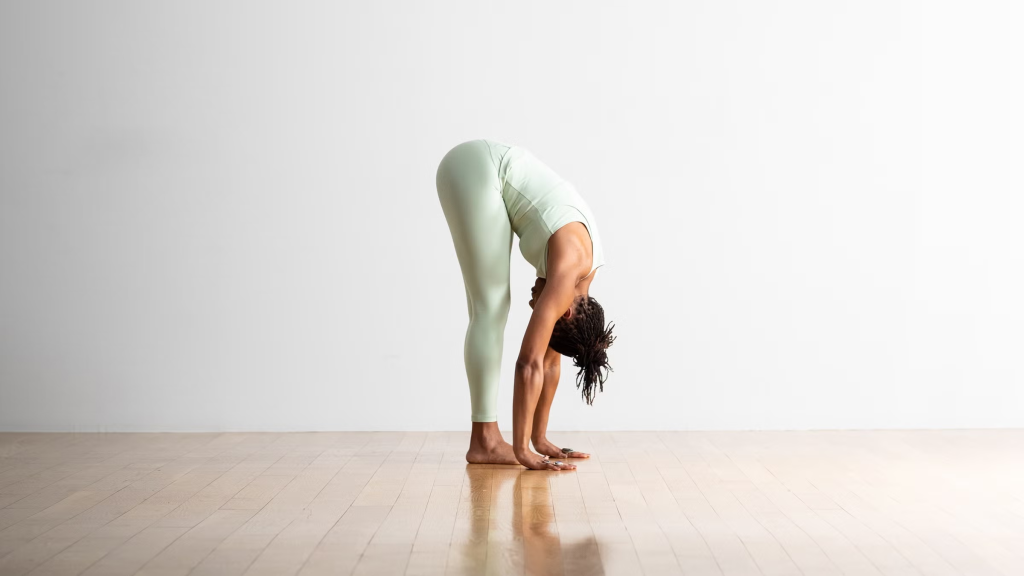
Time: 1 minute
Stand, fold forward slowly. Engage your core as you rise back up, vertebra by vertebra.
Targets: Core, hamstrings, and lower back
Finish Strong: This helps decompress your spine and strengthens deep core muscles.
Consistency Over Crunches
This isn’t about chasing six-pack abs. It’s about reclaiming strength, posture, and energy from the tight grip of a chair.
Interesting Fact: According to Harvard Health, just 8 minutes of core activation daily can significantly reduce back strain and improve sitting posture over time.
So the next time you finish your workday, don’t just log off—log into your body. These 8 minutes are more than a workout. They’re your daily undo button.
Quick Recap: Your Daily 8-Minute Core Revival
| Minute | Exercise | Focus Area |
|---|---|---|
| 1 | Seated Knee Raises | Lower abs, hip flexors |
| 2 | Standing Oblique Crunches | Obliques, balance |
| 3 | Plank with Shoulder Taps | Deep core, stability |
| 4 | Dead Bug | Transverse abs, control |
| 5 | Glute Bridges | Glutes, lower back |
| 6 | Seated Torso Twists | Obliques, spine mobility |
| 7 | Cat-Cow Stretch | Spinal decompression |
| 8 | Standing Forward Fold + Squeeze | Core & back recovery |
Final Word
You don’t need an hour at the gym to strengthen your core. With just 8 focused minutes, you can fight the effects of sitting, support your spine, and feel more energized throughout the day.
Because the best core workout isn’t the one that gets you sore—it’s the one you can actually do every day.
Frequently Asked Questions (FAQs)
Can you really undo the effects of sitting with just 8 minutes of exercise?
While 8 minutes won’t completely reverse prolonged sitting, it can significantly reduce its negative effects—especially when done consistently. It activates key muscle groups, improves circulation, and helps prevent posture-related pain.
Do I need equipment for this abs workout?
No. This workout is equipment-free and ideal for doing at home or in the office. A chair or mat is all you need, and even those are optional for some movements.
Is this abs workout suitable for beginners?
Yes. Each exercise is low-impact and easy to modify. If you’re just starting out, slow down the pace or reduce the duration per move to suit your fitness level.
Will this workout help with lower back pain from sitting?
Absolutely. Strengthening your core supports your spine and can relieve pressure on your lower back, which is often aggravated by weak abdominal and gluteal muscles.
Can I do this workout during work hours or at my desk?
Yes! Several exercises, like seated knee raises and torso twists, can be done discreetly at your desk. It’s a great way to refresh during breaks.
How often should I do this workout for best results?
Aim for at least 5 days a week. Consistency is more effective than intensity. Just 8 minutes a day can yield noticeable improvements in posture, energy, and core strength over time.
Will this workout help me get visible abs?
This workout strengthens your abdominal muscles, but visible abs also depend on overall body fat percentage, which requires a combination of consistent exercise and proper nutrition.

